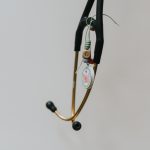Under Review: No
Issued by Council (Closing, Leaving or Moving a Medical Practice): Jan. 1, 2010
Reissued by Council (Closing or Leaving a Medical Practice): Jan. 1, 2021; Jan. 9, 2014
Note: a glossary of terms can be found at the end of this document. Glossary terms are indicated in teal with a “G” throughout this document.
Preamble
Every physician has the right to close or leave a medical practice or to change their pattern of practice based on personal priorities, financial considerations, health conditions or a variety of other reasons. The choice to close, leave or change a practice does not constitute job action unless those actions are intended to compromise access to physician services to further a negotiating position.
In that case, the Job ActionG standard of practice must be followed.
Standard
- For the purpose of this standard, closing or leaving a practice is defined as:
- discontinuing the practice of medicine completely with no intention of returning;
- a leave of absence for more than twelve (12) months during which time there is no establishment of any medical practice in the province of Alberta;
- a significant change in the regulated member’s scope of practice;
- moving to a location a significant distanceG from an existing practice such that existing patients could not reasonably be expected to travel to the new practice location; or
- a significant decrease in the volume of medical practice that will require the involuntary diminution of the number of patients in a practice.
- A regulated member who closes or leaves a medical practice must take reasonable stepsG to place patients under acuteG and/or activeG care with another healthcare provider: what is reasonable will depend on the reason for the practice closure, patient needs and the healthcare providers or health system resources available in the community. This does not require a replacement be in place prior to departure.
- A regulated member who closes or leaves a medical practice must arrange follow-up on any outstanding investigations, test results or reports to ensure continuity of careG.
- A regulated member who closes or leaves a medical practice must:
- notify CPSA* a minimum of ninety (90) days in advance of closing or leaving the practice;
- provide and document notificationG of the event to individual patients who have been seen within the past year with whom there is an expectation of ongoingG care a minimum of ninety (90) days in advance of closing or leaving the practice;
- in instances where a replacement will be in place to take over the practice, the notice period may be shortened, but the regulated member must use their professional judgment to determine an appropriate timeframe based on their unique clinical practice; and
- provide notification of closing or leaving the practice to all healthcare providers to whom they regularly refer patients or from whom they receive referrals, hospitals where they hold privileges, employers and the Alberta Health Care Insurance Plan, if applicable.
- Notwithstanding clause 4, the 90 days’ notice does not apply to a regulated member if the reason for closing or leaving a medical practice is due to circumstances beyond the regulated member’s control (e.g., sudden illness, death, revocation, suspension). In these cases, CPSA, patients and individuals or agencies identified in clause 4(c) must be notified as soon as is reasonably possible given the circumstances.
- A regulated member must provide CPSA with:
- information describing how the transfer of patient care will be managed, where applicable;
- information on the location and disposition of patient records and how the patient records may be accessed (as per the Patient Record Retention standard of practice);
- the name and contact information for the regulated member’s successor custodianG;
- a forwarding mailing address and contact information for the regulated member; and
- all unused Triplicate Prescription forms in the possession of the regulated member if ceasing a medical practice in Alberta.
- A regulated member must not accept referrals or new patients if they do not expect to resolve the matter before they close or leave a medical practice.
- A regulated member who closes or leaves a medical practice is responsible for the secure storage and disposition of the patient records from that medical practice.
- A regulated member who closes or leaves a medical practice and does not maintain custody of the records (e.g., where a new healthcare provider practices in the same location) must ensure there are information sharing agreementsG relating to management of patient charts; the information sharing agreement must, at a minimum:
- identify which regulated member(s) will maintain custody of the patient records;
- describe who is responsible for costs if copies of the record are provided to a regulated member who is a party to the agreement; and
- reflect costs that are reasonable and consistent with applicable legislation and community standards.
- A regulated member who closes or leaves a medical practice must dispose of medications, equipment and supplies in a safe manner.
*To notify CPSA of changes to your practice, please complete the Notification of Change form in the physician portal.
Glossary
Job action: the threatened or actual withdrawal of services in relation to a dispute in accordance with the Job Action standard of practice.
Significant distance: the distance it would be reasonable for a patient to travel is contextual to the practice area and alternate available resources, as some patients may be willing to travel further distances than others to continue seeing their physician.
Reasonable steps: the physician’s attempt(s) to find a suitable healthcare provider to take over care of patients under acute, active care; this will vary depending on patient needs, practice area, availability of alternate resources, etc.
Acute: short-term treatment of a severe or life-threatening injury, illness, routine health problem, recovery from surgery or acute exacerbation of a chronic illness.
Active: providing care to a patient on a regular, including annual, basis, including patients rostered to the physician’s panel.
Continuity of care: as indicated in the Continuity of Care standard of practice, physicians must have systems in place to receive, review, and follow-up on any investigations, including arranging continuous after-hours care.
Notification: patient notification may be made by way of a detailed letter, secure email, or telephone call detailing the regulated member’s last day at the former location, how a new physician may be found (e.g., contacting CPSA’s Member Service Agents at 1-800-561-3899 or using the “Find a Doctor” search at http://www.albertafindadoctor.ca), how to obtain outstanding investigation or referral results, and how patients can access copies of their records.
Ongoing: in an established physician-patient relationship, both the regulated member and patient have a reasonable expectation the care provided will extend beyond a single encounter including, but not limited to, longitudinal relationships, based on the identification of a regular attending physician or clinic and sessional relationships for a defined period of time, based on a presenting concern(s), referred consultation or identified medical condition.
Successor custodian: under the Health Information Act and the Patient Record Retention standard of practice, physicians are required to have agreements and arrangements in place with another custodian to deal with contingencies (e.g., illness, death, relocation to a geographically distant location) to allow for continuity of care and to ensure patients have ongoing access to their health information. For more information and a sample Successor Custodian Agreement, please refer to the Physicians as Custodians of Patient Records Advice to the Profession document.
Information sharing agreement (ISA): as required by the Patient Record Retention standard of practice, an ISA provides clarity on how custodians will manage shared patient records and what will happen in the event the professional arrangement between the custodians changes (e.g., the partnership dissolves). For more information and a sample Information Sharing Agreement, please refer to the Physicians as Custodians of Patient Records Advice to the Profession document.
Acknowledgements
CPSA acknowledges the assistance of the College of Physicians and Surgeons of British Columbia, the College of Physicians and Surgeons of Ontario and the College of Physicians and Surgeons of Nova Scotia in preparing this document.
About the Standards of Practice
The CPSA Standards of Practice are the minimum standards of professional behaviour and ethical conduct expected of all physicians registered in Alberta. Standards of practice are enforceable under the Health Professions Act and will be referenced in the management of complaints and in discipline hearings.
Questions?
For questions or archived standards, policies and guidelines contact our Standards of Practice Advisor.



















